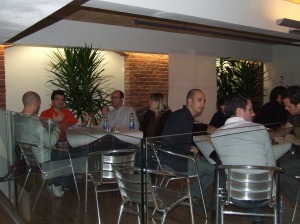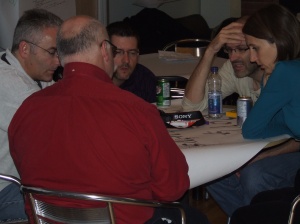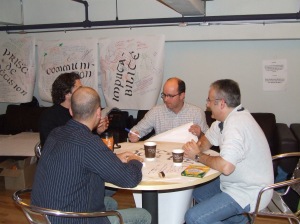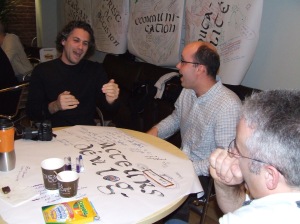In a post on our internal wiki, Eric suggested we have a look at a recent HBR article by Henry Mintzberg – Rebuilding Companies as Communities. Using a non-traditional organizational structure within our company, Eric knew that the article would be of interest to those of us who believe in the community structure as well as to those who doubt this is a viable organizational model.
Beneath the current economic crisis lies another crisis of far greater proportions: the depreciation in companies of community—people’s sense of belonging to and caring for something larger than themselves. Decades of short-term management, in the United States especially, have inflated the importance of CEOs and reduced others in the corporation to fungible commodities—human resources to be “downsized” at the drop of a share price. - Rebuilding Companies as Communities. Using a non-traditional organizational structure
I need to clarify that in our context, a community is different than the one frequently understood of a social community. Our communities are true business units and need to be financially self-sufficient (they need to generate enough revenue to support their cost structure).
As I presented a few months ago, we have taken the community approach to organize our various departments and we recently realized that we needed a central community to organize – at least in the short term – the work of the various communities. We humoursly called it the BOSS for Bureau d’Organisation et de Support aux Services, in French for Office of Organization and Support Service.
The BOSS’ Mission
- Crystallizes information for the communities to help them develop their strategy;
- Acts as the conduit and diffuser of the strategic and tactical information relevant to the achievement of objectives;
- Ensures transparency and compliance with the financial capability (definition and monitoring of the budget) of the communities;
- Guides the communities to be effective in their orientation;
- Establishes the context for evaluating the contribution of the communities (financial, vision, strategy);
- Maintains the social architecture of the communities;
- Acts as a sounding board for new initiatives;
- Maintains and prioritizes the backlog of initiatives;
- Detects and offers points of improvement;
- Organizes monthly meetings;
- Organizes bi-annual Strategic Cafés.
Rules
- All employees must be part of at least one sub-community.
Defined Processes
To create a community: The community should establish and implement a business plan that seeks profitability and submit it to the BOSS for approval. Each community must define its own rules of participation.
To end a community: The criteria and details for this process will be detailed shortly.
Answers to frequently asked questions (FAQ)
Is the BOSS responsible for setting the strategy?
What should communities report to the BOSS?
I have an idea to launch a new community, what do I do?
Our implementation of the community structure has hit bumps along the way but to date, it seems to be a viable alternative to traditional organizational structures. As with many innovations, we need to make sure we adapt the model to our reality in order for it to be an efficient structure.















Recent Comments